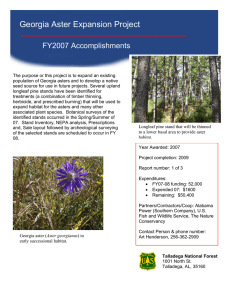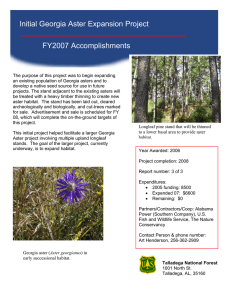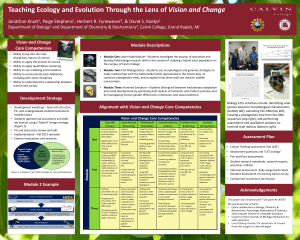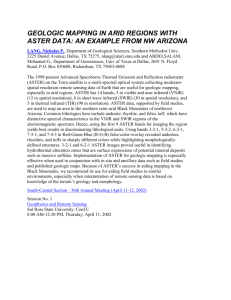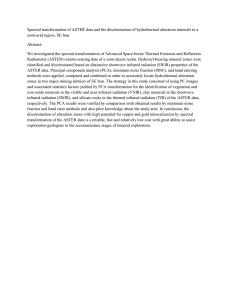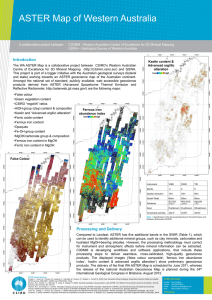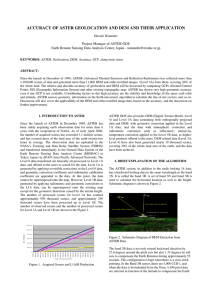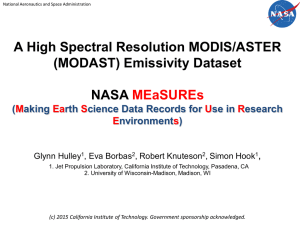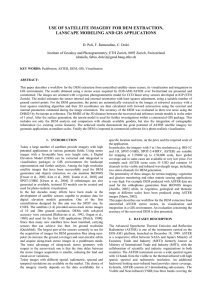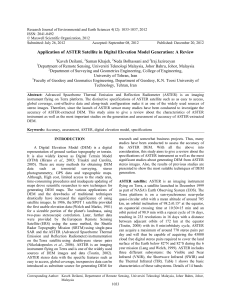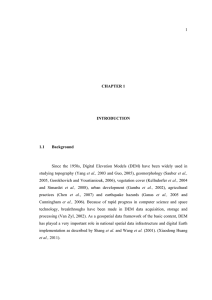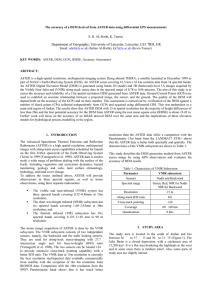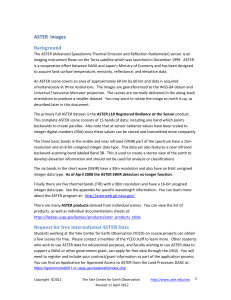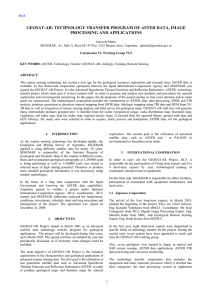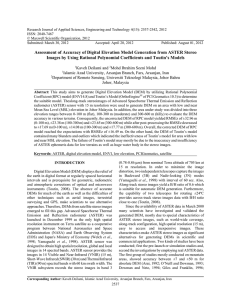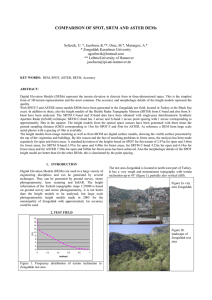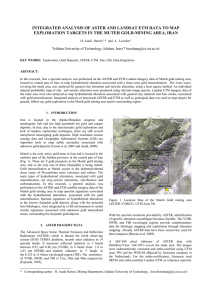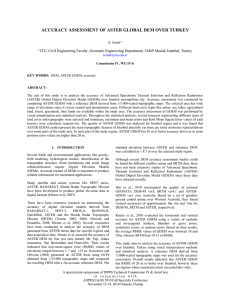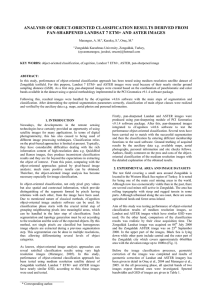International Archives of Photogrammetry and Remote Sensing, Vol. 34, Part... “Challenges in Geospatial Analysis, Integration and Visualization“, Athens, Georgia, USA...
advertisement
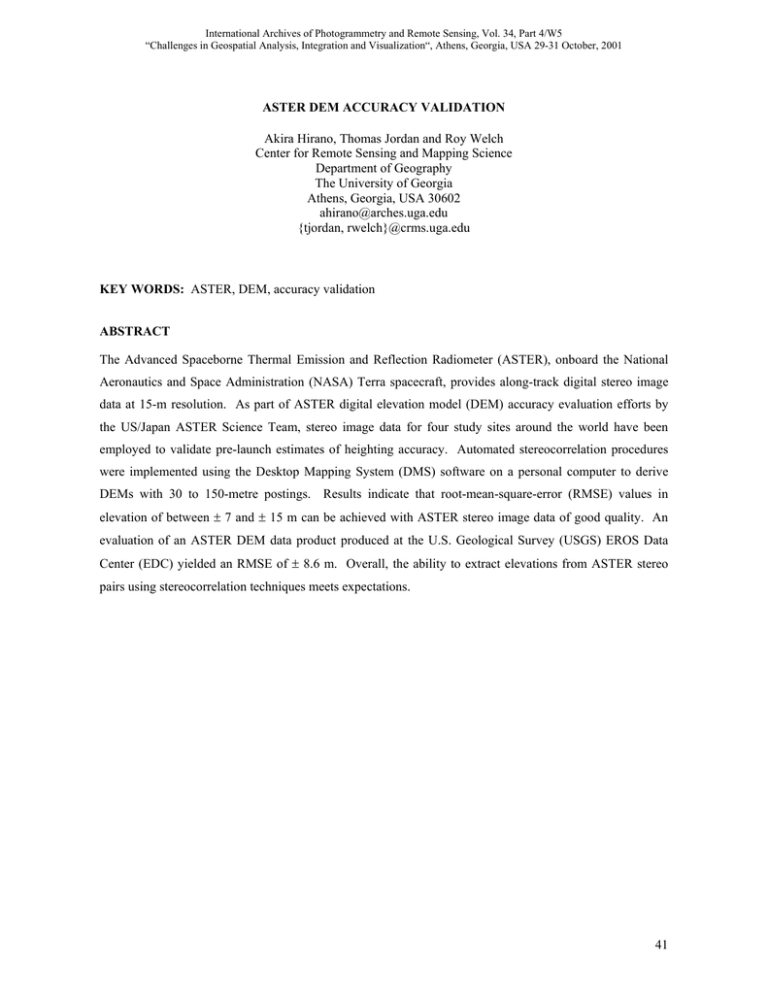
International Archives of Photogrammetry and Remote Sensing, Vol. 34, Part 4/W5
“Challenges in Geospatial Analysis, Integration and Visualization“, Athens, Georgia, USA 29-31 October, 2001
ASTER DEM ACCURACY VALIDATION
Akira Hirano, Thomas Jordan and Roy Welch
Center for Remote Sensing and Mapping Science
Department of Geography
The University of Georgia
Athens, Georgia, USA 30602
ahirano@arches.uga.edu
{tjordan, rwelch}@crms.uga.edu
KEY WORDS: ASTER, DEM, accuracy validation
ABSTRACT
The Advanced Spaceborne Thermal Emission and Reflection Radiometer (ASTER), onboard the National
Aeronautics and Space Administration (NASA) Terra spacecraft, provides along-track digital stereo image
data at 15-m resolution. As part of ASTER digital elevation model (DEM) accuracy evaluation efforts by
the US/Japan ASTER Science Team, stereo image data for four study sites around the world have been
employed to validate pre-launch estimates of heighting accuracy. Automated stereocorrelation procedures
were implemented using the Desktop Mapping System (DMS) software on a personal computer to derive
DEMs with 30 to 150-metre postings. Results indicate that root-mean-square-error (RMSE) values in
elevation of between ± 7 and ± 15 m can be achieved with ASTER stereo image data of good quality. An
evaluation of an ASTER DEM data product produced at the U.S. Geological Survey (USGS) EROS Data
Center (EDC) yielded an RMSE of ± 8.6 m. Overall, the ability to extract elevations from ASTER stereo
pairs using stereocorrelation techniques meets expectations.
41
